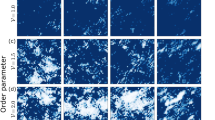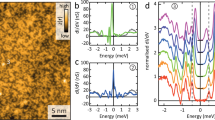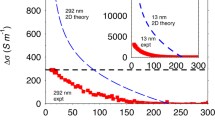Abstract
IN 1931 de Haas and Voogd1 showed conclusively that the electrical resistance of a single crystal of very pure tin vanishes discontinuously at the transition temperature. In this experiment the external magnetic field was zero, and the transition curve was extrapolated to zero measuring current. They showed also that physical or chemical impurity produces an extended transition region. Since then it has been generally assumed2 that such an abrupt change of resistance also takes place when the transition occurs in a (longitudinal) magnetic field, extended transitions being ascribed to impurities. Experiments carried out in this Laboratory3,4 on very pure lead exhibiting transitions extending over a wide range of magnetic field cast doubt, however, on the validity of this assumption.
This is a preview of subscription content, access via your institution
Access options
Subscribe to this journal
Receive 51 print issues and online access
$199.00 per year
only $3.90 per issue
Buy this article
- Purchase on SpringerLink
- Instant access to full article PDF
Prices may be subject to local taxes which are calculated during checkout
Similar content being viewed by others
References
de Haas, W. T., and Voogd, J., Comm. Leiden No. 214c (1931).
Shoenberg, D., "Superconductivity" (Camb. Univ. Press, 1938).
Pontius, R. B., Phil. Mag., 24, 787 (1937).
Daunt, J. G., Phil. Mag., 28, 24 (1939).
Mendelssohn, K., Proc. Roy. Soc., A, 152, 34 (1935).
de Haas, W. H., Leipziger Vortraege (1934).
Author information
Authors and Affiliations
Rights and permissions
About this article
Cite this article
MACDONALD, D., MENDELSSOHN, K. The Superconductive Transition. Nature 162, 924 (1948). https://doi.org/10.1038/162924a0
Issue date:
DOI: https://doi.org/10.1038/162924a0



